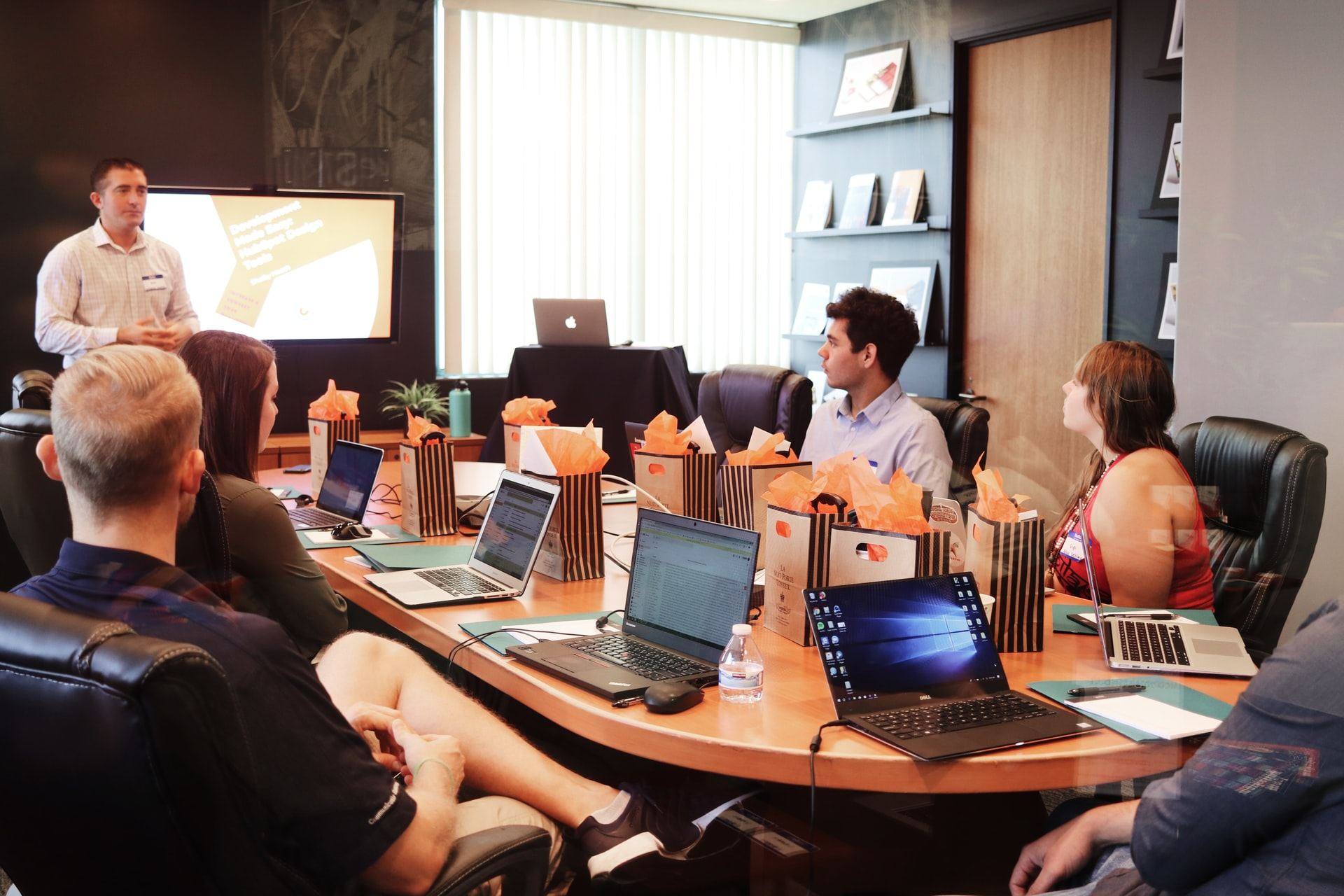How To Design And Implement An Effective IT Strategy

With IT at the forefront of every business, an effective IT strategy enables you to enhance performance and profitability whilst staying within the boundaries of compliance.
In our role as IT Strategy Consultants for a wide range of businesses, it is evident that business leaders fall short in their understanding of an effective IT strategy. That’s totally understandable given the complexity and fast pace of today’s technology space.
According to a report published by McKinsey, the five areas of focus for CEOs in 2023 is sustainability, transforming in the cloud, cultivating talent, operating with purpose, and investing in the right technologies that boost the performance of operations.
Each of these key objectives can only be achieved by implementing technological solutions with an effective IT strategy. And every business needs a dynamic and flexible IT strategy that describes the application of technology to achieve market objectives.
The goal of an Effective IT Strategy
An effective IT strategy delivers a comprehensive roadmap that enables you to meet your business objectives within the framework of your budget.
It goes without saying that your IT infrastructure should be well designed from a technical perspective. Without the fundamentals in place, there is a higher risk of system failure and less opportunity to achieve operational targets.
The first step of an effective IT strategy is to outline a plan that will establish the following objectives:
- Implement an IT infrastructure that aligns with your business goals and meets the expectations of stakeholders including C-Suite executives, staff, customers, partners and supply chain.
- Establish a unifying approach to data processing and sharing that improves efficiency, eliminates duplication, minimises error, enhances collaboration and provides a secure environment to store sensitive data.
- Creates processes that facilitate data collection, processing and analytics whilst adhering to compliance regulations.
- Install technologies that deliver critical insights and reliable business intelligence.
- Install a holistic and comprehensive approach to cybersecurity that prioritises reliance
- Adopt relevant technologies that maximise productivity and profitability whilst safeguarding against extended downtime.
- Establish lines of communication between IT teams, decision makers and end users in order to deliver the best results from business processes that are supported by IT.
In-depth Analysis
A forward-thinking IT strategy involves building an enterprise architect that addresses your existing needs, facilitates future growth and enables you to be agile in evolving markets.
An effective IT strategy starts with five pillars outlining your goals, analysing and evaluating existing IT infrastructure and creating a robust plan that defines your metrics.
You start the planning process by performing an in-depth analysis that takes into account your company-wide goals and objectives. List all your existing infrastructure and processes, and identify where you need to optimise efficiency so that your future IT infrastructure aligns with your growth objectives.

Take stock of all your hardware, software and users so that you can assign the appropriate funding and resources. The end result of your IT strategy is to plug the gaps in your existing infrastructure with the minimum amount of disruption and within the boundaries of your preferred budget allocation.
The best way to identify where gaps appear is to perform a company-wide investigation. Start in the boardroom to understand the short-term and long-term objectives of key stakeholders.
With the objectives in mind, speak with reliable managers and ‘shop-floor’ employees that can highlight potential barriers that prevent you from achieving business objectives.
Selecting Compatible Solutions
There is an abundance of IT solutions on the market, but there’s no guarantee you will find the perfect solution for your business in one package.
As a matter of fact, it’s impossible given the broad range of solutions you need to implement in order to meet your business objectives. Adopt a “one size fits all” is more likely to weaken the efficiency of your overall business network and waste capital.
There’s no escaping the fact that you will need to implement an array of third-party software. And that’s where complications can arise, both in terms of cost and compatibility.
When two pieces of software are not compatible, it creates a conflict in your IT network. At best this will lower the performance of your system. The more likely outcome is that conflicting software creates bugs that crash the system and cause downtime that could have been avoided.
Consulting experienced IT strategists like our business experts in London, enables you to avoid potential pitfalls that culminate in system crashes. We have experience with the vast number of IT options available. This enables is to create technological roadmaps that identify the best solutions that meets both your short-term and long-term objectives.
Secondly, we can also fix potential issues that can comprise operations. Regardless of whether you prefer on-site infrastructure, fully cloud-based solutions, or a hybrid-cloud solution, we ensure your entire infrastructure and processes are reliable, secure and GDPR compliant.
Provide Staff Training
To get the most from digital technologies, the enduser needs to know how to leverage the tools. Providing employees with staff training will speed up proficiency whilst helping less tech-minded individuals feel supported and comfortable using new software.
The proliferation of technology that flood on to the market, will mean that every business will adopt a variety of different software. Learning new ways to work can be frustrating for employees have targets to meets and are accustomed to a particular way of working.
Providing staff with relevant training should be built into your IT strategy. Outline a plan to integrate new technologies with the minimum amount of disruption and in a way that will maintain staff morale. You know how frustrated technology can make people.
Bear in mind that people learn in different ways. Therefore, establish training plans that encompass visual, writing and auditory learning methodologies. It can sometimes help to involve employees in setting up their account so they understand their permissions and limitations – which reinforces cybersecurity awareness.

You should also document who will be responsible for arranging and delivering the training – so consultation between IT and HR is the best approach.
Focus on Your Customers
Technology drives the behaviour and expectations and today’s consumers – which means your business IT strategy should include a path that incorporates policies and technologies with a customer-centric focus.
The key points to consider in relation to customers is efficiency, convenience building relationships and the value of service you offer. But you also have to implement a system that mitigates security risks around data storage and sharing.
Knowing where your customer gateways and barriers are enables you to establish well-defined processes that meet customers at every touch point. When your processes are well-honed, you enhance the customer experience and they’re more likely to return.
Your IT strategy should address gateways and barriers in the analysis stage of your planning. What you need to determine is whether you need to invest in technologies that delivers a smooth experience or make tweaks to operations.
Investing in the right software that enables you to enter the market in a way that aligns with your business model and brand identity typically revolves around digital platforms. This is where your marketing and sales strategies should be focused.
The questions you need to answer include whether you’re you a mobile-first brand, an online only brand with omni-channels or a combination of online and offline strategies. If you have a bricks and mortar business which customers visit, what in-store technologies do you need to enhance the customer-centric experience?
Sales and marketing systems also encompasses several areas which are executed by technology. But it’s difficult to find a single solution that effectively manages sales, eCommerce, CRM, ERP, payments and accounting etc. Do you have tedious and repetitive tasks that could be performed by artificial intelligence?
Companies also have an obligation to ensure that customer data is stored and processed in a secure environment. Your IT strategy should document how you intend to implement an effective cybersecurity defence that mitigates the risk of a data breach – and if it fails, can you prove to the Information Commissioner’s Office that you did as much as possible within your financial constraints.
Compliance
Law makers have been working hard to regulate the digital businesses – particularly with regards data protection, whistle-blowing and money-laundering.
Although multinational companies are usually the perpetrators of illegal activities, regulations often present big barriers to small companies. GDPR, for example, is a case in point.
Google and Facebook, the key players that spurred the EU to enforce the General Data Protection Regulation are reaping significant profits. Meanwhile, 60% of small businesses have to close their doors following a data breach.

IT has a central role to play in your compliance strategy. Cybersecurity and anti-money laundering will be the priority for most SMEs. Companies with more than 50 employees are also subject to the EU Whistleblowing Directive.
Governance requires companies to maintain meticulous record-keeping; and at the same time, data has to be stored and processed in secure environments.
For the most part, keeping track of compliance deadlines and automating basic compliance objectives can be integrated into your network using basic compliance software.
Then, of course, there is the issue of cybersecurity. Here, we enter a whole new ballgame. And this is one area of compliance that business leaders cannot afford to overlook. A Cybersecurity risk assessment will have its own section in a comprehensive IT strategy.
Cyber criminals continue to produce increasingly sophisticated methods and technologies to infiltrate business networks. Maximising the security and resiliency of your organisation is a continuous process that must be built into your IT strategy.
For example, enterprises are held accountable to update security patches when they are released by a software company. In most cases, that means business leaders rely on your employees to perform the update.
Rather than run the risk of an employee failing to update software and leave a gateway open for threat actors to exploit, incorporating patch management into your IT strategy is an easy way to mitigate the risk.
The good news is that cybersecurity solutions don’t have to erode your entire IT strategy. The majority of data breaches are caused by human error, therefore, providing your workforce with cybersecurity awareness training significantly reduces the risk of a data breach.
IT Support in London
Getting your IT strategy right can make a huge difference in the success of your business. A poorly designed network that is not maintained correctly can cause significant losses.
A survey reveals that small businesses in the UK alone, lose an accumulative £18.77 billion due to poor connectivity and downtime. Most of the IT issues SMEs encounter in the UK can be avoided.
Priming an IT strategy for optimum success requires, creativity, innovation, vision and support from experienced IT professionals. The experts at Micro Pro are here to help you to achieve your business objectives both in the short-term and the long-term.
Firstly, we evaluate your existing system to assess you current ecosystem, strategies and sub-strategies. The next step is to draft a plan which outlines the options available to you. Our consultants discuss these options to help you choose solutions that you feel are the best fit for your business.
The next stage is to help you design and implement the IT strategy to ensure your network is optimised. Working hand in hand with IT specialists takes your IT strategy to the next level by leveraging existing infrastructure and technologies.
In today’s world, the best option is to take advantage of industry experts that ensure your IT strategy can deliver on your data business objective. Contact our IT specialists in London today to discuss your vision.


